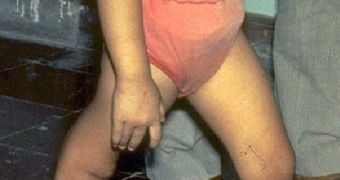Poliomyelitis is an infectious disease caused by a virus that enters the body through the mouth and multiplies in the gut. When reaching the nervous system, it causes sudden total paralysis. When the virus gets into the brain and spine, it causes fever, exhaustion, headache, vomits, neck and extremities pain. Motor nerves are damaged leading to paralyzed limb and breathing muscles.
Usually, the infection is caught during the childhood. But the regenerative power of the body is amazing. The loose nerves can send ramifications, "rewiring" the muscle cells left without their nerves. For example, a motor neuron whose axon (the long termination sending commands to the muscles) stimulated before 1,000 muscle cells can connect now to 5,000-10,000 muscle cells. By 14-20 years of age, many patients can walk again.
But 15-20 years later, these neurons can manifest signals of tiredness due to their excessive efforts. The neurons age earlier and get exhausted. Some of their terminations die and this way some muscles turn back to paralysis or experience atrophy.
That's why many former poliomyelitis patients who had been recovered years before, can experience again the disease symptoms, like debility, muscle pain, exhaustion, joint pain, cold intolerance (because the body has lost the capacity of decreasing blood flow to the skin in case of cold weather) and breathing issues. The pain when moving can be so great that many patients prefer a wheel chair. Because of the loss of protection against low temperatures the muscles turn cold and lose communication with the nerves, functioning improperly (that's why many patients move to warmer climes).
This means that former poliomyelitis patients must rest more than other people, have a slower life rhythm and not sustain physical effort. Physiotherapy, heat treatment and stretching can help.
There are about 20 million persons worldwide that experienced poliomyelitis and 25-50% experience the post-poliomyelitis syndromes. The risks are connected to the gravity of the initial infection, the age when the infection took place (at younger age means less risks later), recuperation time (paradoxically, more rapid and complete recovery increases the later risks) and physical activity (the risk increases if former poliomyelitis patients practiced performance sport). This does not mean that exercising must not be done, only that it should occur in a physiotherapy program, started slowly and increased gradually, with a warm-up period, stretching and general aerobic exercising. Swimming is very indicated.

 14 DAY TRIAL //
14 DAY TRIAL //